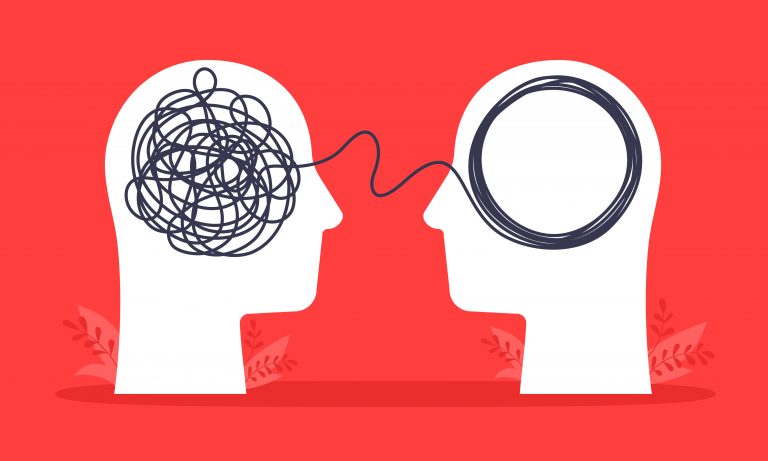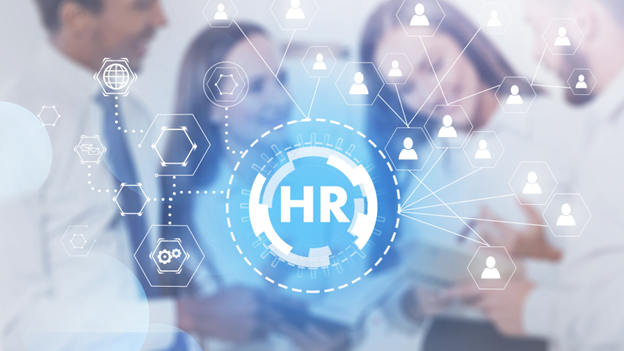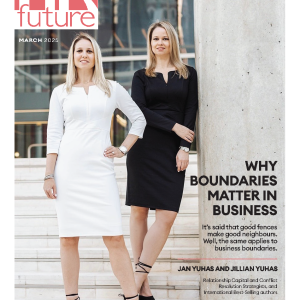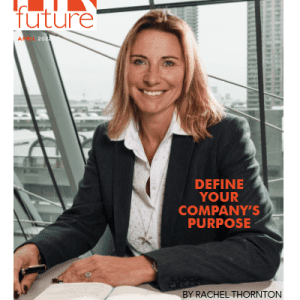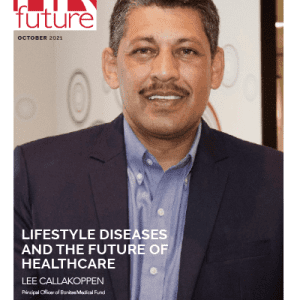Technology offers HR Professionals major opportunities.
At times, it can feel like the business world is run by shallow fads no better than those questionable fashion choices of previous decades. A relatively recent and growing area of focus is the fourth industrial revolution (4IR) or Industry 4.0. All of us will recognise parts of it, some may be living and working in this new state. Even if you are, this article will delve into the area firstly by defining what 4IR is about, how we got here and what we in HR should be doing now to prepare both ourselves and our workplaces.
What is 4IR or even an industrial revolution?
The term Fourth Industrial Revolution (4IR or ‘Industry 4.0’) was introduced in 2016 by Professor Klaus Schwab, Founder and Executive Chairman of the World Economic Forum (WEF). Since then the term has proven a serial topic of conversation, most recently headlining at Davos 2019. Even with all this attention, we have still not reached ‘peak’ 4IR. Google trends illustrate that search results for the term have spiked (from a meager five in November 2018) to over five million this month.
To begin with, it’s best to define the term “industrial revolution”. It is characterised by a series of seismic shifts occurring across multiple industries or sectors in the methods or focus of production during a period of time. According to Schwab, we are entering the fourth such industrial revolution. The first involved the use of “water or steam power to mechanize production”. The second saw the introduction of mass production by way of electric power. We are mostly familiar with the third, the digital revolution which began in the middle of the 20th century, most noticeable for our move towards mobile and internet technologies, mass customisation and the digitalisation within manufacturing.
Building on this is 4IR, which distinguishes itself, according to Schwab, by its “velocity, scope and systems impact”. Unlike the previous industrial revolutions, the speed of innovative changes and their embeddedness into our lives will be unprecedented. We are already living in this reality with smart applications and appliances which customise their actions according to their interpretation of our data. Subject fields which will most likely see the most emerging technological breakthroughs include:
- Artificial intelligence (AI) and Machine Learning (ML);
- Autonomous and Urban Mobility;
- The Internet of Things (IoT), Robotics and Smart cities;
- Blockchain and Distributed Ledger Technology;
- Data Policy;
- Digital Trade;
- Drones and Tomorrow’s Airspace; and
- Precision Medicine.
Perhaps, because the term is so fresh and HR often trails behind reactively, there has been little mention of 4IR or Industry 4.0 in our publications. But we can expect significant changes as the workforce skills rubric is modified, new categories and styles of work emerge and with these unearthed questions around the ethicality, data privacy and newly disadvantaged workforce groups.
What is the connection between 4IR and HR?
For most HR functions, the first induction to 4IR is people analytics, a subset within the field of ‘Big Data’. Previously, people spoke of “Big Data”, but this has now been usurped by a focus on AI, though both are related. The former is the ‘raw input’ which, when cleaned and structured, is processed to generate the predictive outputs: AI.
HR departments’ move to the cloud has facilitated the adoption of ‘people analytics’ for better decision making. Globally, people analytics have been successfully implemented into businesses. In its paper: People Analytics: Driving business performance with people data, the CIPD (in collaboration with Workday) found that 71 per cent of global HR respondents had access to people data produced within their organisations. This was primarily used to:
- understand workplace performance and productivity (75%);
- monitor work culture or behaviours (69%); and
- attract and retain performance/ talented individuals (66%).
Though not new, there is a range of how firms have used their data. When focusing specifically on the UK, the report discovered that 76 per cent of firms only used their data to conduct the most basic level of analysis. Of the 21 per cent of HR professionals with the analytical skills to conduct more advanced techniques, only six per cent felt confident enough to do so at their firms. The situation is better in other regions, particularly Asia, demonstrating a skills or developmental lag in British HR functions. This lag is likely to continue if present estimates for AI are to be believed.
Future of 4IR and HR: more data, more problems
Apart from AI systems becoming increasingly popular in the HR function, many businesses plan to incorporate more AI systems into their companies. According to the International Data Corporation (IDC), worldwide spending on AI systems is forecast to reach $79.2B by 2022, more than doubling the amount spent in 2018. This is in turn fueling the skills shortages for AI builders (researchers, software developers and data scientists) and AI translators (business leaders and change management agents). This is an imminent challenge for the HR function: hiring, training and retaining these AI builders and translators. More worrying is Deloitte’s finding that the most AI intensive firms replace employees with ‘new talent’ rather than retrain current employees.
HR Professionals are not absolved from the process of upskilling too. As demonstrated above, many companies are not getting the most from their people data. However, Deloitte’s job category, of ‘AI translators’ includes “Change Management Agents” a domain traditional fulfilled by HR Professionals. This is another one of the areas which will require us to upskill under 4IR. As the WEF writes in its paper, HR4.0: Shaping People Strategies in the Fourth Industrial Revolution; HR will need to create new roles internally to manage the integration and new culture emerging as a result of this technology in the workplace. The paper predicts emerging HR roles such as: Head of Work Reinvention and Reskilling, Digital HR Lead, and Head of Relevance and Purpose.
Even for those not intending to specialise in such niche functions, HR Leaders overseeing the 4IR systems in the workspace will still need to understand them. Agrawal, Gans and Goldfrab in their book, Prediction Machines: The Simple Economic of Artificial Intelligence, write about the risk of AI systems due to possible biases in the raw data, the amount of quality data, ability to measure and predict what is required and the level of feedback. Do we currently have the expertise to assess the employee impact of these technological implementations? Secondly, HR will need to understand more about data policies: the regulations of security, transfer, monitoring and corrective actions for poor employee behaviour. If under 4IR we are going to see an increase in digital trade, it will no longer be sufficient to consider the data regulations in one region, for example the EU with GDPR. We might need to account for the Cybersecurity Law etc. (China), Compliance with the Privacy Shield (USA) and other nations; until a global interoperable legal data privacy system emerges — which is unlikely or at least very far away.
Additionally, even with clean data, the authors note the growing importance of “human judgement” to override AI workplace decisions. It is the HR function that will have to develop new performance management tools to adequately measure this currently imprecise capability. The authors do not specify how “human judgement” is derived, but we can speculate that it is attained through “sufficiently regular” environments and “prolonged practice”. This might change our current notions of ‘good’ job design which, according to the CIPD, emphasises “flexibility” and “variety”.
Even before these AI and automated systems are implemented, their position in the company will need to be carefully planned out. HR specifically will need to play a pivotal role in mapping the current and future work processes, monitoring the systems and evaluating any illegal discriminatory practices which the systems may have embedded in them. Agrawal, Gans and Goldfrab’s warnings about unclean data or poor AI decisions (for example, in recruitment, talent management or employee wellbeing) mirror the concerns raised by WEF which foresees HR having to “embed D&I into… in culture and process” an additional job task for the “Diversity and Inclusion Officers”.
But it is not just the AI systems which future D&I Officers will need to monitor. McKinsey predicts both an increase in cross-border migration and racial tensions as firms hire foreign workers to fill their skills gaps. It might mean greater resources dedicated to relocation services, induction programmes and personalised onboarding procedures, all in an attempt to attract and retain these highly skilled individuals. With this comes recent research by Zhang (2019) which has shown that “raising awareness of workplace automation did not decrease opposition to globalization” or foreign workers. HR teams will need to be prepared for this wider societal hostility invading the workplace. We will need to develop more effective internal D&I training sessions and disciplinary procedures or otherwise risk losing highly skilled foreign workers to more accepting businesses.
We are already living in the 4IR but, like with most technology, the take-up varies significantly from industry-to-industry, function-to-function and, as the data shows, from HR Professional to HR Professional. 4IR presents huge opportunities for within HR by supporting evidence (data) based decision-making and giving us new chances to use our change management expertise. However, it also requires a more skilled and knowledgeable HR function too. The workplace will become more complex as people work in a highly diverse structure of different nationalities and combinations of human-robotics systems. Though we have already started this adoption, there is still a lot for us to do to be prepared for 4IR.
Yinka Opaneye is the Group HR Director for GameAnalytics and one of the largest mobile advertising platforms, Mobvista. He has an MA in Human Resources Management and an Employment Law Certificate, and is a CIPD qualified HR Professional with over 15-years’ progressive experience. Most recently, Yinka has focused on the technology sector, supporting the growing FinTech firms in the EU region, and the gaming sector. He is the author of the book FinTech In Africa (2015), which explores how FinTech has impacted the continent.









